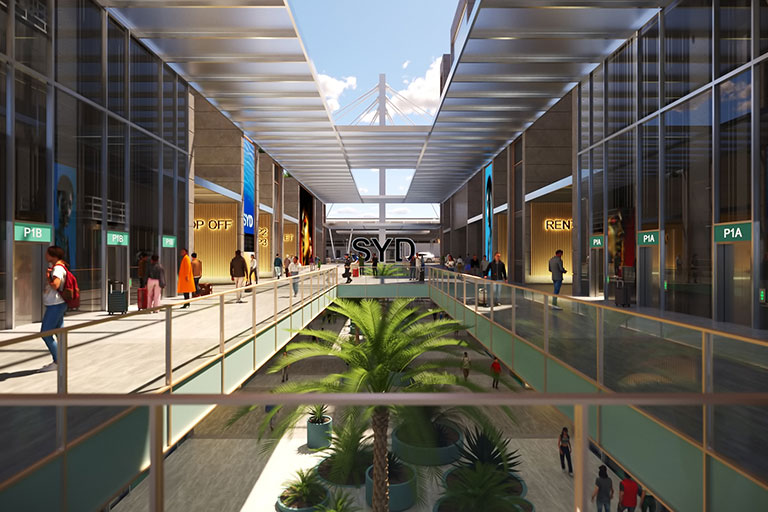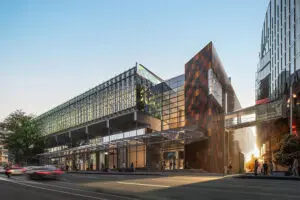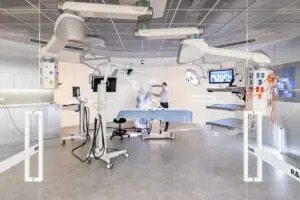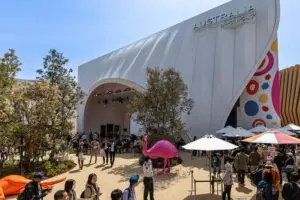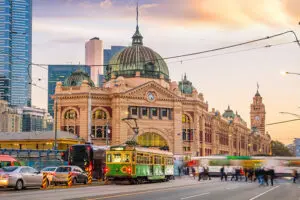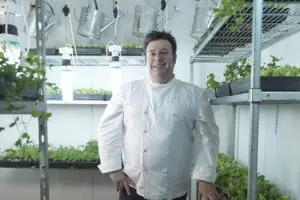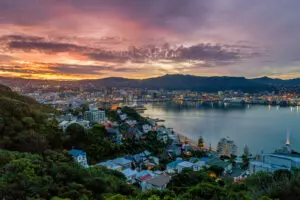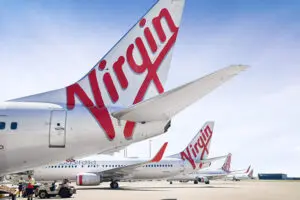The draft master plan, which is now on public exhibition for feedback until December, forecasts that the airport will service 72.6 million passengers each year by 2045, representing a 75 per cent increase on the passengers serviced now.
In 2024, the airport serviced 41.4 million passengers across more than 301,000 aircraft movements to 105 domestic and international destinations. In doing so, according to the master plan document, the airport supported $45.3 billion of economic activity, both directly and indirectly.
By 2045, the airport forecasts its economic contribution will be $70.6 billion each year.
To support the growth in passenger numbers, the master plan proposes a major terminal expansion, which would see the T2 and T3 terminals linked and would bring domestic, regional and international flights under the same roof.
The integration of the two terminals would yield up to 12 new international gates and another two gates in the T1 international terminal. The capacity to service domestic and regional Australian flights would also increase with the expansion.
“The proposed major terminal expansion joining the T2 and T3 Terminals will be the most significant development at Sydney Airport since the Olympics, and will unlock greater capacity across all terminals, more efficient use of our runways, and ultimately get passengers from the ground and into the air more quickly,” said Sydney Airport CEO, Scott Charlton.
“When Sydney Airport grows, so does business, trade, tourism and jobs. This plan is about building the future of Australia’s gateway and ensuring we are ready to play our part in NSW’s ambitious visitor economy strategy.
“We are conscious that growth also brings responsibility. We’re committed to managing aircraft noise, taking steps to reduce our emissions footprint, and working closely with residents, councils and government to make sure the benefits of growth are shared.”
The airport has already neutralised the environmental impact of its direct electricity usage, having signed a power purchase agreement that came into effect at the start of the year that sees its electricity supply be effectively 100 per cent renewable.
Sydney Airport is looking to be carbon neutral across its scope 1 and 2 carbon emissions by 2030, however scopes 1 and 2 represent less than one per cent of its total emissions profile, with its scope 3 emissions taking into account the carbon emissions of every flight which departs from the airport, as well as a variety of other third party emissions onsite.
In its master plan, the airport is looking at how it can influence the reduction of its scope 3 emissions, including helping to advance a local sustainable aviation fuel (SAF) industry.
The master plan also outlines potential for up to another 1,400 hotel rooms within the airport precinct’s footprint, including between 200 and 500 rooms near T1 and 500 to 900 rooms near T2 and T3.




